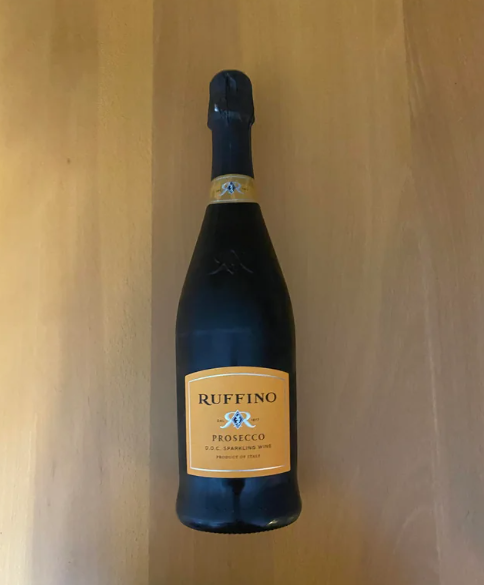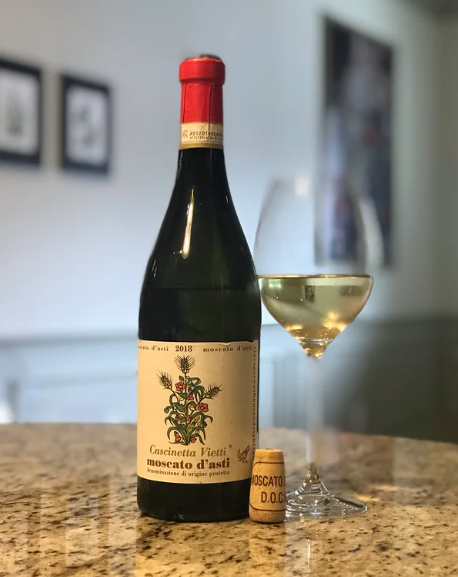Moscato vs Prosecco: Top 8 Differences [Fizz Faceoff]
When it comes to sparkling wines, Prosecco and Moscato are two popular choices that captivate the palates of wine enthusiasts around the world. They are both popular Italian sparkling wines, boast distinct flavor profiles, and are often associated with diverse occasions. In this fizz faceoff, we’ll delve into the top eight differences between Prosecco and Moscato, exploring their origins, production methods, tasting notes, and ideal pairings.
Briefs On Prosecco and Moscato
Prosecco is usually drier and fully sparkling and has a crisp acidity and green fruit flavors like apple and pear. While Moscato is sweeter and semi-sparkling, with pronounced stone fruit and floral aromas. When we say the wine is dry it simply means a wine that has no residual sugar, in other words the wine isn’t sweet.
Origins and Grape Varieties
Prosecco and Moscato originate from different corners of the winemaking world. Prosecco, a sparkling wine from Italy, primarily comes from the Veneto and Friuli Venezia Giulia regions. It is crafted mainly from the Glera grape, although regulations allow for the inclusion of a few other local varieties.
Moscato on the other hand, also known as Muscat, traces its roots to various regions, with notable expressions from Italy, Spain, and France. The grape used in Moscato wines is the Muscat grape, renowned for its aromatic qualities and versatility.
Charmat vs Traditional Production Method
One significant difference is distinct in the production methods used for Prosecco and Moscato. Prosecco is typically made using the Charmat method, a process that involves fermentation of the wine in large stainless steel tanks. This method preserves the fruity and floral characteristics of the Glera grape, resulting in a crisp and effervescent drink.
Moscato often undergoes the traditional method, also known as the methode champenoise. This labor-intensive process involves fermenting the wine in the bottle, allowing it to develop complexity and depth over time. The traditional method is known for producing finer bubbles and a more refined effervescence.
Sweetness Levels
Prosecco and Moscato range of sweetness levels are very distinct and different. Prosecco is available in various styles, ranging from Brut (dry) to Extra Dry (slightly sweet) and Dry (off-dry). This flexibility allows consumers to choose a Prosecco that aligns with their preferred sweetness level.
Moscato falls on the sweet side when compared to Prosecco. Most Moscato wines fall into the sweet or semi-sweet category, making them a delightful choice for those who like their wines sweet. The natural sweetness of the Muscat grape is preserved in the final product, creating a luscious and indulgent experience.
Flavor Profiles
Prosecco often has notes of green apple, pear, citrus, and sometimes floral undertones. Its crisp acidity and refreshing taste make it a versatile option for various occasions, from casual celebrations to formal events.
Moscato delights the senses with its pronounced fruity and floral aromas. Tasting notes commonly include peach, apricot, orange blossom, and honeysuckle. The inherent sweetness of Moscato is balanced by its vibrant acidity, creating a harmonious and aromatic experience that appeals to a wide audience.
Alcohol Content
While both Prosecco and Moscato are light and easy to drink, there are subtle differences in their alcohol content. Prosecco typically has a slightly higher ABV (Alcohol By Volume) ranging from 11% to 12.5%, contributing to its dry and crisp finish. Moscato, on the other hand, tends to have a lower ABV which is usually around 5% to 7.5%, emphasizing its lighter and more refreshing character.
Occasions and Pairings
The choice between Prosecco and Moscato often depends on the occasion and the desired food pairings. Prosecco’s versatility makes it a go-to option for a wide range of situations, from brunches and aperitifs to formal dinners. Its dry nature and effervescence complement dishes such as seafood, light salads, and creamy pasta.
Moscato, with its sweetness and floral notes, is an excellent choice for desserts and fruit-based dishes, maybe like a pie. It’s a delightful choice for celebrations, picnics, and casual gatherings where a touch of sweetness enhances the overall experience. Pairing Moscato with fresh berries, peach cobbler, or a creamy cheesecake can certainly elevate the tasting experience.
Cultural Significance and Traditions
Prosecco is an integral part of Italian culture, often enjoyed during celebrations and as an accompaniment to traditional Italian cuisine. Moscato also has its own cultural ties, especially in Italy, where it has been produced for centuries and holds a place in both everyday and festive settings.
Price Range and Accessibility
When it comes to affordability and accessibility, Prosecco often has a broader range of options to suit various budgets. The Charmat method used in its production allows for a more cost-effective process, making Prosecco an accessible choice for many consumers. Moscato, while still being affordable, may have a slightly higher cost associated with the traditional method and the unique characteristics of the Muscat grape.
Conclusion
In the Prosecco vs Moscato fizz faceoff, both sparkling wines showcase their unique characteristics, offering a diverse array of options for discerning palates. Whether you prefer the crisp and dry elegance of Prosecco or the sweet and aromatic allure of Moscato, these sparkling wonders provide an exciting journey through the world of sparkling wines. Understanding the differences in their origins, production methods, sweetness levels, flavor profiles, amongst others allows you to make the right choice based on your preferences and the occasion at hand.
To sum it up, deciding whether Moscato or Prosecco wine is best totally depends on your taste and personal preference. At the end of the day a glass a wine, regardless if it is Prosecco or Moscato, is a good option.








